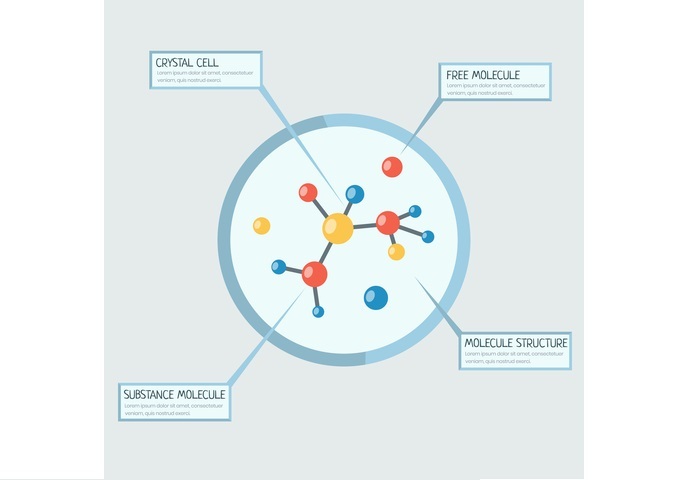
 Data Structure
Data Structure Networking
Networking RDBMS
RDBMS Operating System
Operating System Java
Java MS Excel
MS Excel iOS
iOS HTML
HTML CSS
CSS Android
Android Python
Python C Programming
C Programming C++
C++ C#
C# MongoDB
MongoDB MySQL
MySQL Javascript
Javascript PHP
PHP
- Selected Reading
- UPSC IAS Exams Notes
- Developer's Best Practices
- Questions and Answers
- Effective Resume Writing
- HR Interview Questions
- Computer Glossary
- Who is Who
Genetic and Molecular Analyses of Transgenics
Introduction
Transgenic organisms are living organisms whose genetic material has been artificially modified to introduce specific traits or characteristics. This can be done through genetic engineering, which involves the insertion of specific genes or DNA sequences into an organism's genome.
Transgenic organisms have become increasingly important in various fields, including agriculture, medicine, and biotechnology. Genetic and molecular analyses are essential in understanding the mechanisms underlying transgenesis and in evaluating the potential risks and benefits associated with the use of transgenic organisms.

Genetic Analysis of Transgenics
Genetic analysis involves the study of an organism's genetic material, including its DNA, RNA, and proteins. In transgenic organisms, genetic analysis is used to determine the presence and expression of the foreign DNA sequences that have been introduced into the genome.
The most common method of genetic analysis is polymerase chain reaction (PCR), which is used to amplify specific DNA sequences. PCR can be used to detect the presence of the foreign DNA sequences in transgenic organisms.
For example, if a transgenic organism has been modified to express a fluorescent protein, PCR can be used to amplify the DNA sequence encoding the protein and confirm its presence in the organism's genome.
Another method of genetic analysis is Southern blotting, which is used to detect the presence and copy number of specific DNA sequences in an organism's genome. This technique involves the use of restriction enzymes to cut the DNA into fragments, which are then separated by gel electrophoresis.
The DNA fragments are then transferred to a membrane and probed with a specific DNA probe that binds to the target sequence. The presence of the probe indicates the presence of the target DNA sequence in the organism's genome.
Molecular Analysis of Transgenics
Molecular analysis involves the study of the molecular mechanisms underlying gene expression and regulation in transgenic organisms. This includes the study of the promoter regions that regulate gene expression, the splicing mechanisms that generate different mRNA isoforms, and the translation mechanisms that produce the final protein products.

One important tool in molecular analysis is the use of reporter genes, which are genes that encode for easily detectable proteins or enzymes that are used to measure gene expression levels.
Reporter genes can be fused to the regulatory regions of other genes, allowing the expression of the target gene to be monitored in real-time. For example, a promoter region can be fused to a gene encoding a fluorescent protein, and the expression of the protein can be visualized using fluorescence microscopy.
Another important tool in molecular analysis is the use of microarray analysis, which allows the expression of thousands of genes to be monitored simultaneously. This technique involves the use of microarrays, which are small chips containing thousands of DNA probes that correspond to different genes.
mRNA samples are isolated from the organism of interest and labelled with fluorescent dyes. The labelled mRNA is then hybridized to the microarray, and the fluorescence intensity at each probe is measured. This allows the expression levels of thousands of genes to be quantified simultaneously.
Risks and Benefits of Transgenics
The use of transgenic organisms has both potential benefits and risks. Some of the potential benefits of transgenics include -
Increased crop yields.
Resistance to pests and diseases.
Production of valuable pharmaceuticals.
To study human disease and develop new therapies.
However, there are also potential risks associated with the use of transgenics. These include unintended effects on the environment, such as the spread of transgenes to wild populations, and unintended effects on human health, such as allergic reactions to transgenic proteins.

The use of transgenics in agriculture has also raised concerns about the potential for increased use of pesticides and herbicides, as well as the potential for the emergence of new pests and diseases.
To evaluate the potential risks and benefits associated with the use of transgenic organisms, it is important to conduct thorough risk assessments and to carefully monitor the effects of transgenic organisms on both the environment and human health. This requires a combination of genetic, molecular, and ecological analyses.
Environmental Impact of Transgenics
Transgenic organisms have the potential to interact with wild populations and alter the ecological balance of an ecosystem. This can occur through gene flow, which is the transfer of genetic material from transgenic organisms to wild populations. Gene flow can occur through various mechanisms, such as seed dispersal, pollen drift, and animal migration.
Human Health Impacts of Transgenics
Transgenic organisms can also have unintended effects on human health, particularly if the transgenes encode for allergenic proteins or if transgenic animals are used for food production. To assess the potential human health impacts of transgenics, researchers conduct toxicological and allergenicity analyses.
Toxicological analyses involve the study of the potential for transgenic organisms to produce toxic substances that can harm human health. This includes studies of the potential for transgenic crops to produce harmful levels of pesticide residues and studies of the potential for transgenic animals to produce harmful levels of hormones or antibiotics.
Final Interpretation
Genetic and molecular analyses are essential in understanding the mechanisms underlying transgenesis and in evaluating the potential risks and benefits associated with the use of transgenic organisms. These analyses involve the study of an organism's genetic material, including its DNA, RNA, and proteins, as well as the molecular mechanisms underlying gene expression and regulation.
The use of transgenic organisms has the potential to provide many benefits, such as increased crop yields and the production of valuable pharmaceuticals. However, there are also potential risks associated with the use of transgenics, such as unintended effects on the environment and human health.
It is important to carefully evaluate the potential risks and benefits of transgenic organisms and to use them in a responsible and sustainable manner.

